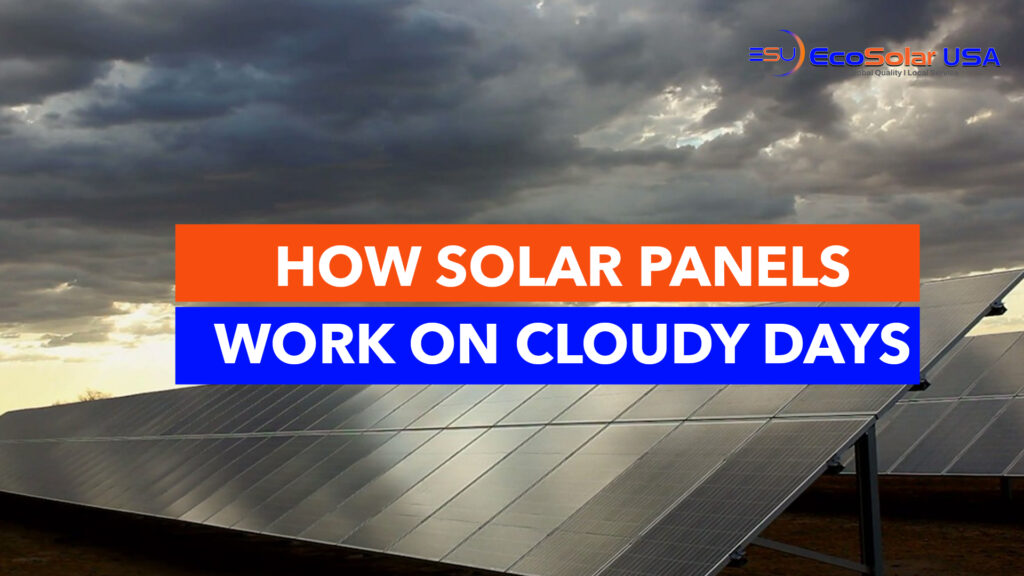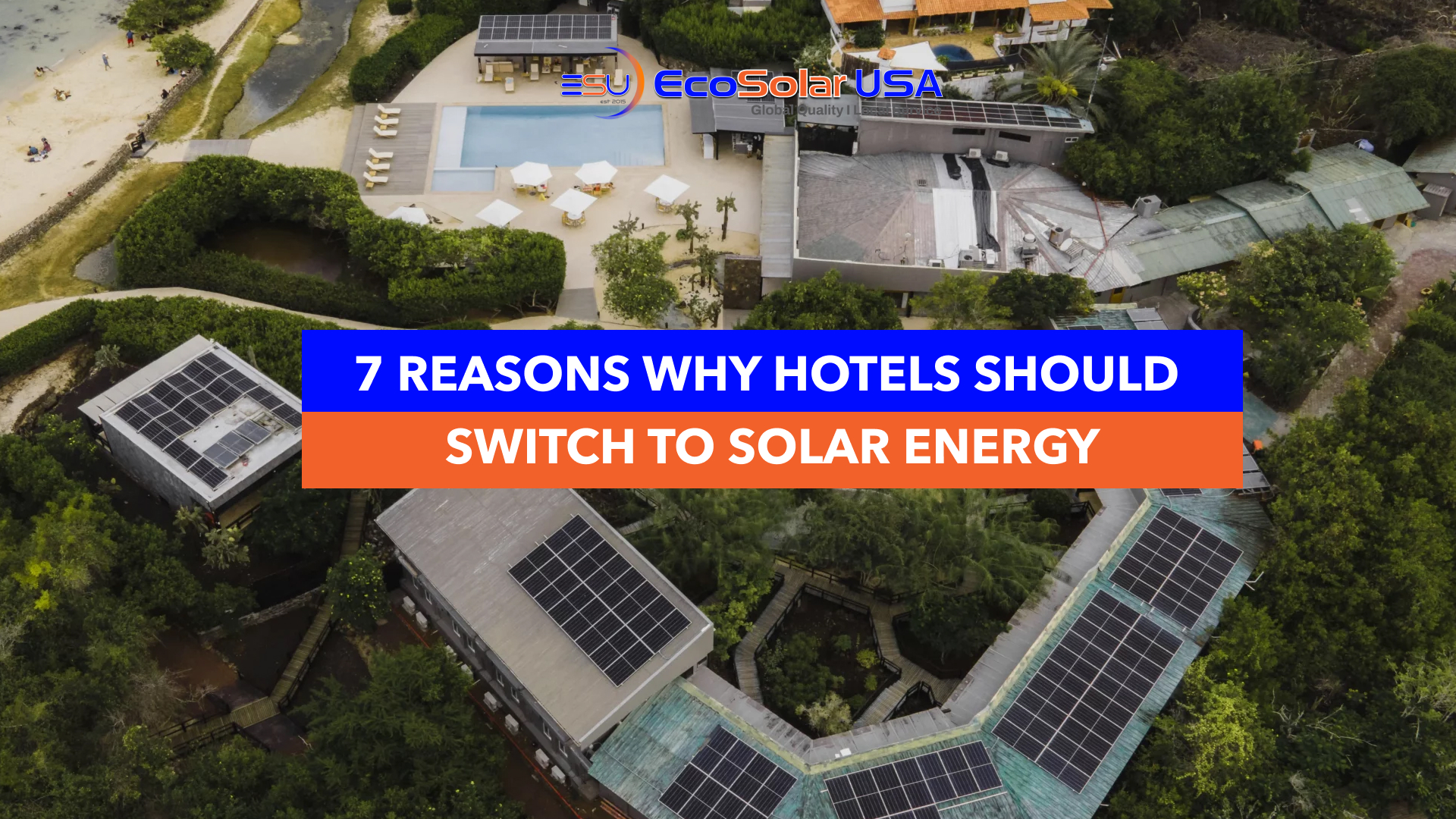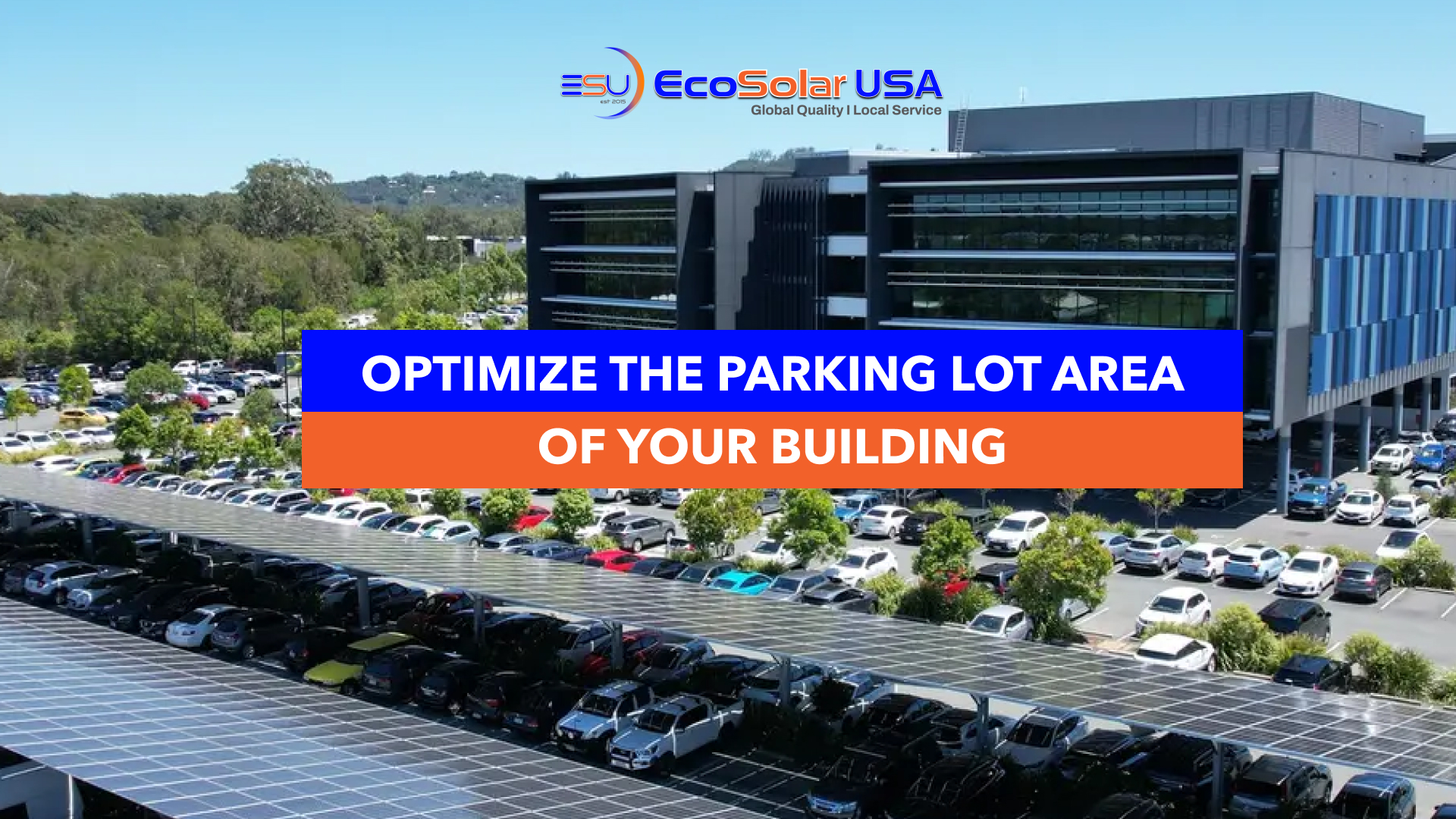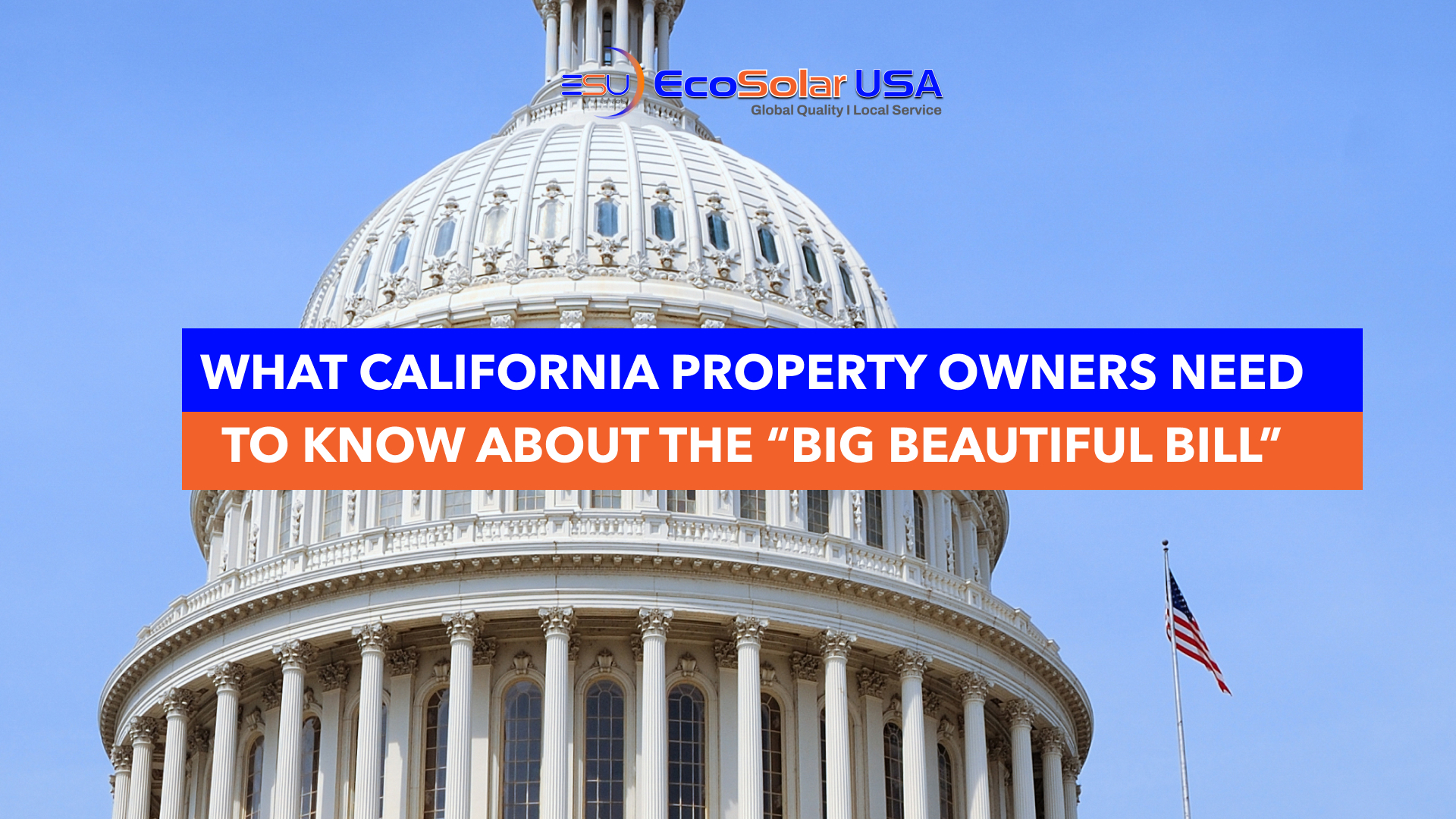
Harnessing solar energy is one of the smartest long-term investments a homeowner in California or Texas can make. Below you’ll find how solar works, how it behaves in shade or rain, how tax laws are shifting, and how you can maximize your system with net metering, battery storage, and system design.
Solar Irradiation & Sunlight Potential in California & Texas
The map above shows average solar resource (Global Horizontal Irradiance, GHI) across the U.S. — darker red/orange zones have higher irradiation, meaning more usable sunlight. This map is based on long-term datasets compiled by the National Renewable Energy Laboratory (NREL). NREL
Typical Solar Potential in CA & TX
- Many parts of California (especially inland, southern, and desert zones) receive among the highest solar irradiation in the U.S. — ideal for high performance solar systems. NREL+2Wikipedia+2
- In Texas, the solar potential is also strong — particularly in West and Central Texas — though slightly lower on average than the sunniest parts of California. U.S. Energy Information Administration+3AltE Store+3globalsolaratlas.info+3
- For example, city-level data show:
• El Paso, TX — ~7.42 kWh/m²/day average insolation AltE Store
• Fort Worth, TX — ~6.00 kWh/m²/day AltE Store
• In California, cities like Fresno, Los Angeles, Riverside show average peak sun (insolation) values in the range of ~5.3-6.5 kWh/m²/day depending on location and season. AltE Store
These numbers help you estimate how much energy a solar system can produce for your home in each region, and how shade or clouds will affect output.
How a Solar System Works for Your Home
- Panels (PV modules) absorb sunlight — both direct and diffused
- The panels convert that light into direct current (DC) electricity
- An inverter converts DC to alternating current (AC) usable in your home
- Power goes to your main electrical panel and runs appliances, HVAC, lighting, etc.
- Excess energy is sent to the grid (if grid-tied) and earns credits via net metering / net billing
- If you have a battery, surplus energy is stored and used later (e.g. at night or during cloudy periods)
Even with partial shade, low light, or rainy days, panels still generate electricity — just at lower output. Modern system design and electronics can reduce losses.
How Solar Works in Shade, Clouds & Rainy Seasons
Diffuse Light vs Direct Light
- Solar panels capture global (total) radiation — which includes direct sunlight and diffuse (scattered) sunlight passing through clouds or atmosphere.
- Panels do not require perfect direct sun all the time; they continue generating under overcast conditions, albeit with reduced efficiency.
- According to EcoFlow: performance during heavy cloud/obscured states may drop 50%–80%, depending on how much light still gets through. U.S. Energy Information Administration+1
Rain & Cloud Effects
- Rain and clouds reduce instantaneous output, but light still penetrates and the panels still produce.
- Rain helps wash away dust, dirt, pollen, potentially improving performance after storms.
- Over the year, solar systems are designed so sunny days compensate for cloudy ones, achieving reliable energy production.
Partial Shade & New Technologies
- Partial shade (from trees, chimneys, nearby buildings) can cause drop in output in affected panels, but technologies like microinverters, power optimizers, or smart string inverters with MPPT help isolate losses so other panels still run near optimal levels.
Here’s a rough comparison:
| Condition | Approx Output vs Full Sun | Comment |
| Full direct sun | ~100% | Ideal performance |
| Mild clouds / diffused light | ~60–80% | Good production still |
| Heavy clouds / partial shade | ~30–50% | Noticeable drop, but usable |
| Deep shade / thick overcast | < 20% | Very limited output, might rely on battery or grid |
The Big Beautiful Bill & Solar Tax Credit — What’s Changing
The One Big Beautiful Bill (H.R. 1) passed in 2025 includes changes to the residential solar tax incentive:
- The 30% Residential Clean Energy Credit (ITC) will expire on December 31, 2025 for most homeowners — meaning systems must be installed and operational by then to qualify.
- After 2025, the residential credit is no longer available, or will be significantly reduced depending on future legislation.
➡️ For homeowners in California and Texas, that means 2025 is your last full year to claim the 30% tax credit on new solar installations.
📈 Electric Rate Trends & Rising Costs
Rising electricity rates amplify the value of solar:
- California: Extremely high residential rates (often >30¢/kWh in many areas) and ongoing rate hikes as utilities upgrade infrastructure and meet clean energy mandates.
- Texas: Lower baseline rates than California, but still increasing over time, and large usage can lead to significant bills in summer.
- Because solar offsets those kilowatt-hour costs, the more the rates rise, the more savings you gain by generating your own power.
As solar share increases and battery deployment expands, states like California are seeing energy systems transform — solar + storage becoming central to grid stability. Reuters+1
Solar vs Generator: Which Works Best?
| Feature | Solar System + Battery | Traditional Generator |
| Fuel / Running cost | Very low (sunlight) | High (fuel, maintenance) |
| Emissions / Noise | Clean, silent | Noise, CO₂ emissions |
| 24/7 capability | Yes (with battery) | Yes (with fuel) |
| Usability in shade/cloud | Yes (reduced) | N/A (not weather dependent) |
| ROI / Payback | High | None — ongoing cost center |
Solar + battery gives you daily usable energy, stored resilience, and cost savings over decades; generators are best as emergency backup, not primary power.
Powering Your Main Residence
When you install solar on your home:
- The system offsets your household load — lights, HVAC, appliances, etc.
- During sunny portions of the day, your home draws mostly from solar, reducing or eliminating grid usage.
- Excess generation goes to the grid (if allowed) under net metering / net billing.
- At night or during low-generation times, you draw from the grid or battery storage.
- Over time, a well-sized system can cover 70%–100% of your annual energy consumption (depending on your usage, orientation, shading, etc.)
Net Metering & Net Billing — How You “Recall” the Credits
- Net metering lets you earn utility credit for energy your solar system sends back to the grid during sunny times.
- Later, when you draw from the grid, those credits offset what you owe.
- In California (NEM 3.0), new systems are often compensated at avoided cost (wholesale equivalent) rather than full retail rate for exports.
- In Texas, policies vary by utility — many offer solar buyback or net export credit programs.
- With smart system design and battery integration, you can maximize use of your own solar energy, minimizing how much you rely on export credits.
Example Solar Savings & Breakeven Table
| System Size | Annual Production (kWh) | Retail Value (e.g. $0.25/kWh) | Approx Savings | Payback Period (Net Cost) |
| 5 kW | ~5,475 | $1,370 | Good for small/medium homes | ~6–8 years |
| 10 kW | ~10,950 | $2,740 | Covers most needs | ~5–7 years |
| 15 kW | ~16,425 | $4,106 | Covers large home usage | ~4–6 years |
| 20 kW | ~21,900 | $5,475 | Big homes or partial battery + EV | ~4–5 years |
These are estimates. The exact numbers depend on solar irradiance at your location, your electric rate, system cost, and your usage.
Conclusion
- Solar systems don’t need perfect direct sun all the time — they still work under cloudy or shaded conditions using diffused light, though at reduced output.
- California and Texas both have strong solar resources, as shown in the irradiation heatmap above, making system performance robust over a year.
- The 30% solar tax credit ending in 2025 means now is the time to act.
- Net metering, battery storage, and smart design help you capture value even when your system’s instantaneous output dips.
- Solar + battery gives you clean, silent, long-term power — and a hedge against rising electricity costs and grid uncertainties.
Let your home truly shine, powered by the sun — rain or shine.
📞 Contact Eco Solar USA for a free solar consultation — we’ll help you calculate your expected production, design a system optimized for your roof and local conditions (shade, orientation, weather), and guide you through incentives, permitting, and installation.



